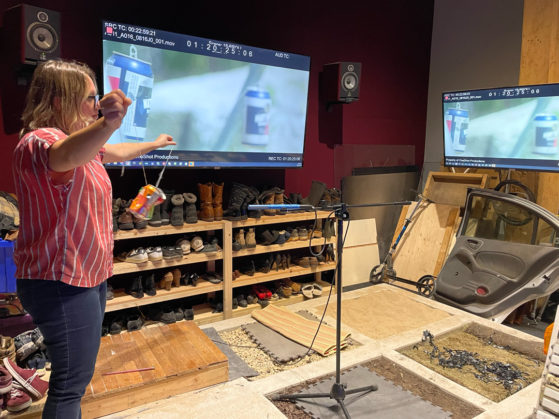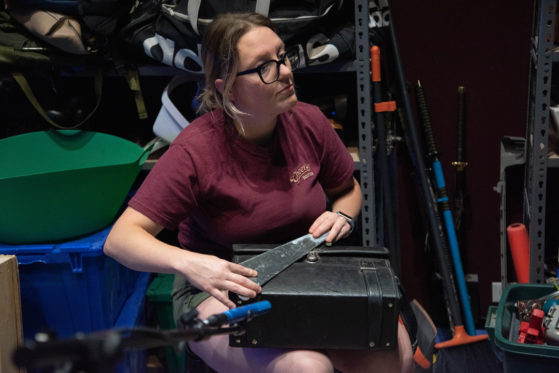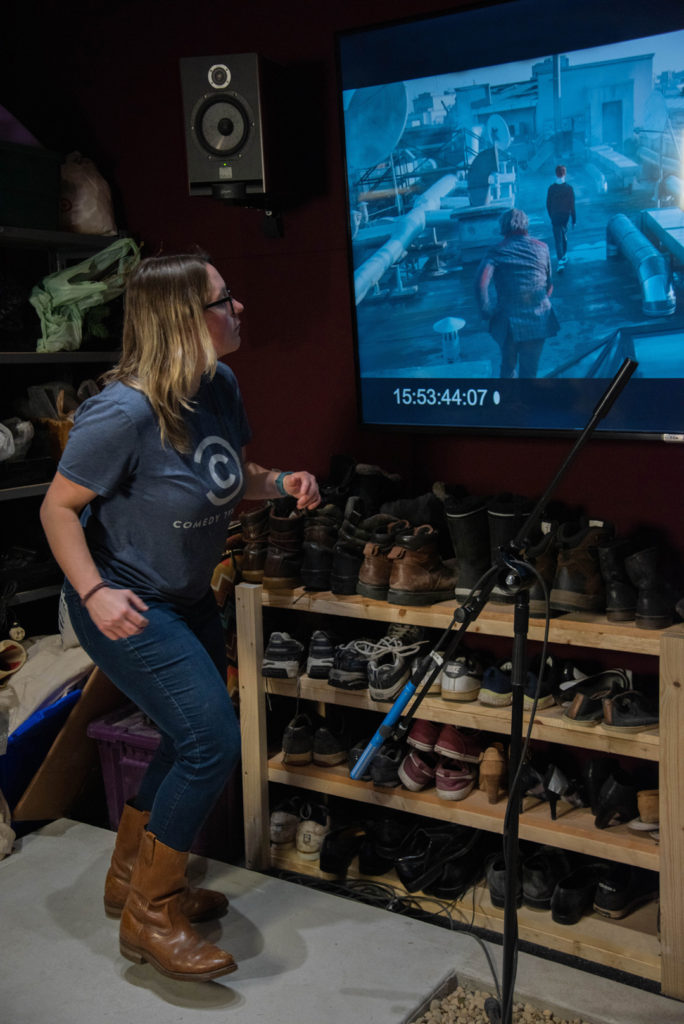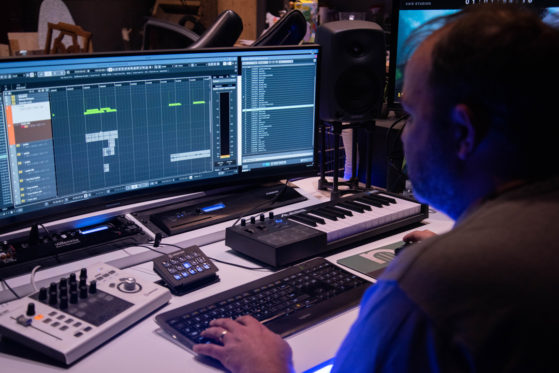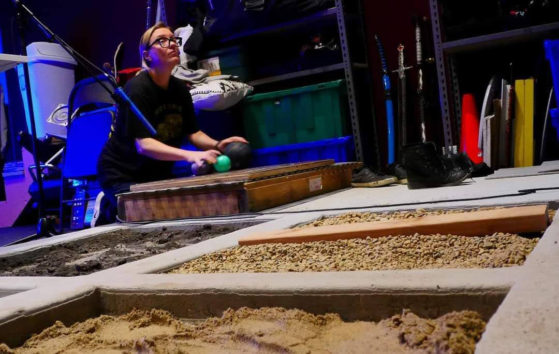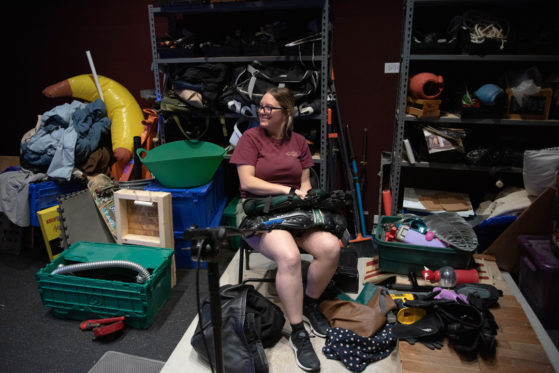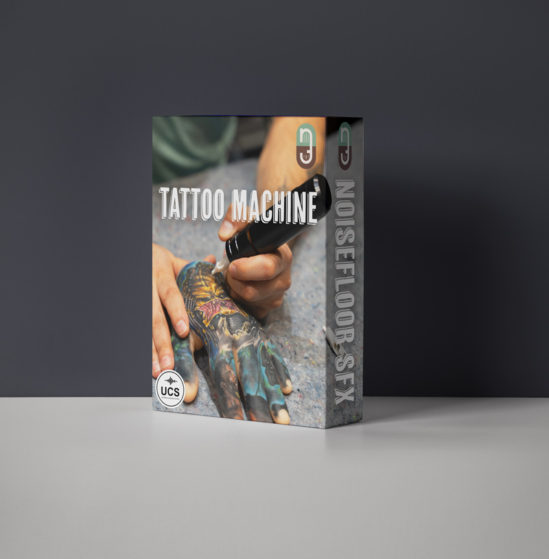
Inked & Mic’d Up: Introducing Our Tattoo Machine SFX Library
Buzzzzzzzzzz…… What’s that sound? Does your sound effects library need some new ink?! We have the perfect tattoo machine sound effects library for you.
We think our Tattoo Machine sound effects will be a great permanent addition to your library. We brought in a professional tattoo artist to perform various techniques at different speeds with multiple needles… Capturing close up detailed mechanics as well as perspectives of full tattoo pieces. Whether it’s a small tattoo or a full chest piece, these sound effects have you covered… in ink.
That’s not all this library has up it’s sleeve… Recorded at 192kHz to capture ultrasonic content, “Tattoo Machine” is a new tool your sound design kit needs. The buzz of line work becomes detailed mechanical pulses when slowed down. Tattoo machine voltage and speed ramps make for a perfect base to a whirring sci-fi vehicle. All of this for a price that won’t cause your wallet any blowout. Check out all that “Tattoo Machine” has to offer!
Machine Master – Rafael Corona
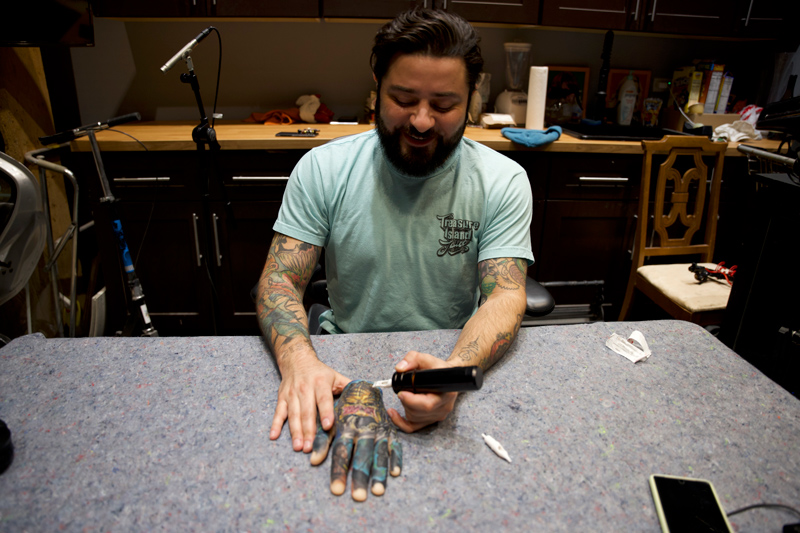
Local artist Rafael Corona from Mayday Tattoo Studios has been tattooing for 20 years and completed thousands of tattoos – but “I have never been asked to do anything remotely close to the amazing recording we did for Noisefloor.”
Specializing in color illustrative tattoos, Corona was more than up to the task of completing a full piece during the recording session. And whether it’s for a SFX library or a client, “Every time I create a piece of art for someone I practice my studies. It is crucial to at least consider all corners of art theory to make the best work. Color theory, value scales, line weight, balance, contrast, and how to emphasize based on the project are very important. Everyone is different, and so listening and getting to know an individual helps with designing the best custom, one-of-a-kind, permanent piece.”
Meet the Creatives
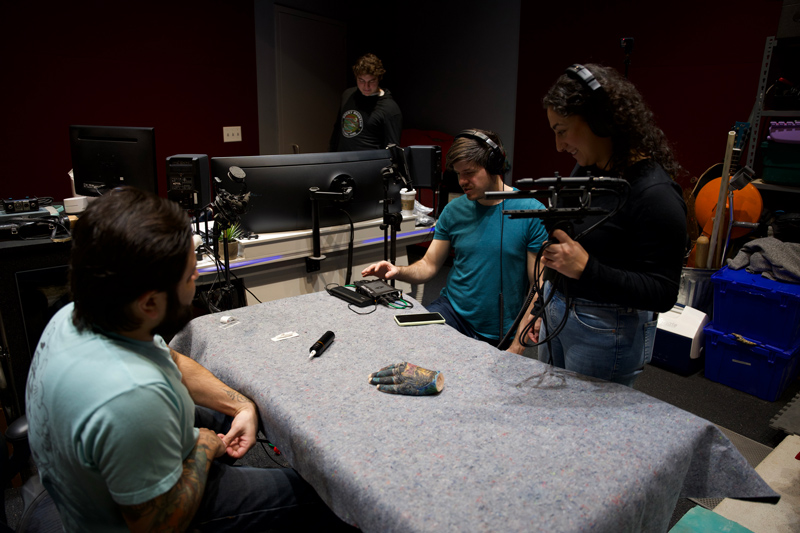
Noisefloor’s Stosh Tuszynski and Victoria Salazar were the sound effects recordists for the session, and they provide some insight on the making of the library.
Were they any special considerations you had to take into account with the high frequencies or extraneous noise of the tattoo machine?
Stosh: Yes, we definitely wanted to consider if there was going to be noise in the high frequency range beyond human hearing that would be heard when slowed down. We didn’t know for sure, but because of how fast the machine was going and how small the parts were we prepared for that by using Sanken Co-100k – which captures up to 100kHz. Because we were recording ultrasonic information, we had to make sure we had both a microphone and a recorder that could capture that high of a frequency.
Did you stay organized via metadata, verbal slating, or a combination of both?
Stosh: It was mostly verbal slating. Before we got started, we sketched out a rough idea of the kind of performances we wanted to capture and what would be useful to sound editors. Different techniques, speeds, and pressures were all put into a list that we showed the tattoo artist which ended up being 3-4 basic movements that we captured. Luckily, we also had a Go-Pro rolling for the duration of the recording process, so we were able to decipher the entire context of the conversation for metadata purposes later.
What parameters did you consider when choosing the microphone for capturing the tattoo SFX?
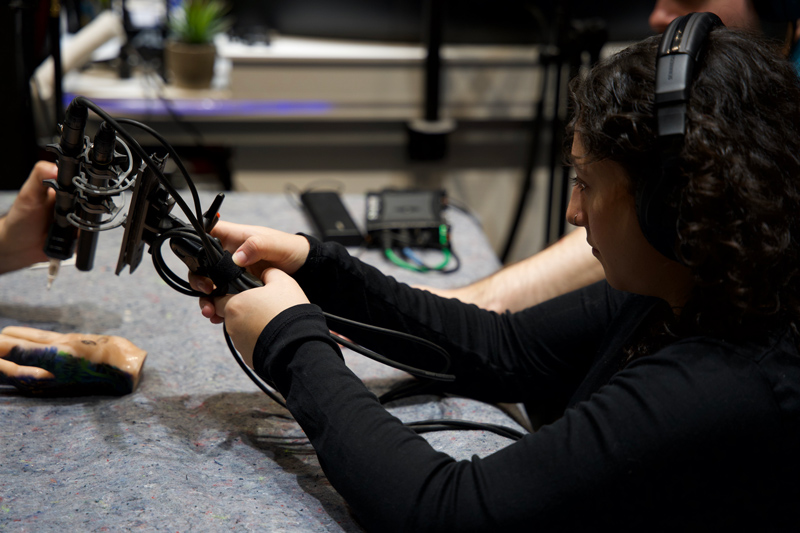
Victoria: We were trying to figure out what we wanted to get out of the library. One of the main things was for sound designers to be able to pitch the effects up and down, and having the information to be able to do so. Stosh brought in his Sanken Co-100K and MKH 8040’s. With the Sanken we were able to get those detailed movements, and the 8040’s in an X-Y setup do a great job of capturing the overall ambience of the room.
When capturing different perspectives in the room, did you have a rule of thumb for the proximity between the microphone and the machine?
Victoria: I stayed within a few inches to get that detail of the needle on the fake hand, and it had this really cool low-end resonance to it. It was definitely exploratory, and I basically determined the distance by listening to it and adjusting from there. For the X-Y setup, we set it up about two feet above the machine to get the full room perspective.
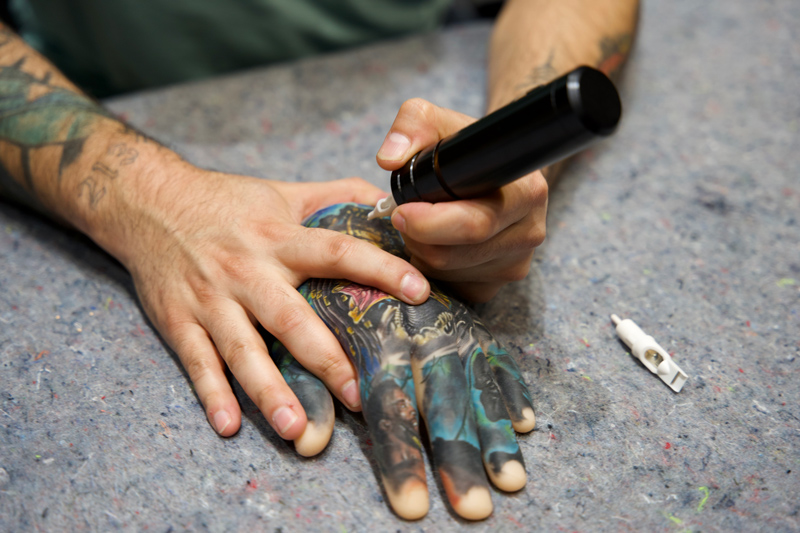
Besides being practically useful to sound editors, what other creative sound design possibilities can you envision being achieved with this library?
Stosh: For me, it screams sci-fi, futuristic vehicular sounds. There’s a lot of variation in pitch and speed that I can see being really useful for a spaceship because of some of the neat doppler sounds or even rattly user interface effects.
Victoria: Importing at 192KHZ and having the ultrasonic information could be used for cool creature sounds or a giant robot – anything super mechanical. Or even reversing it and seeing what kind of warp sounds can be made from it.
